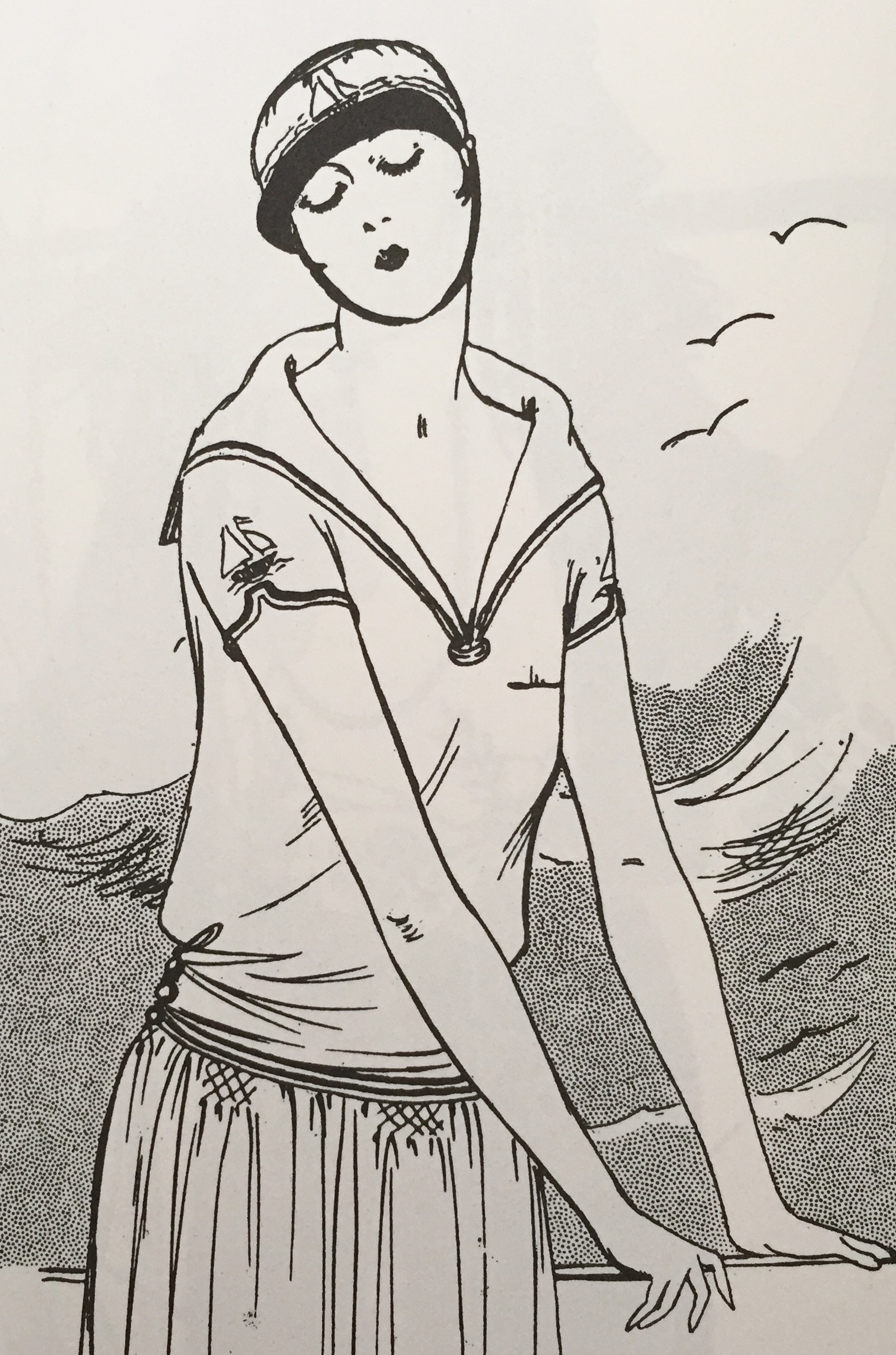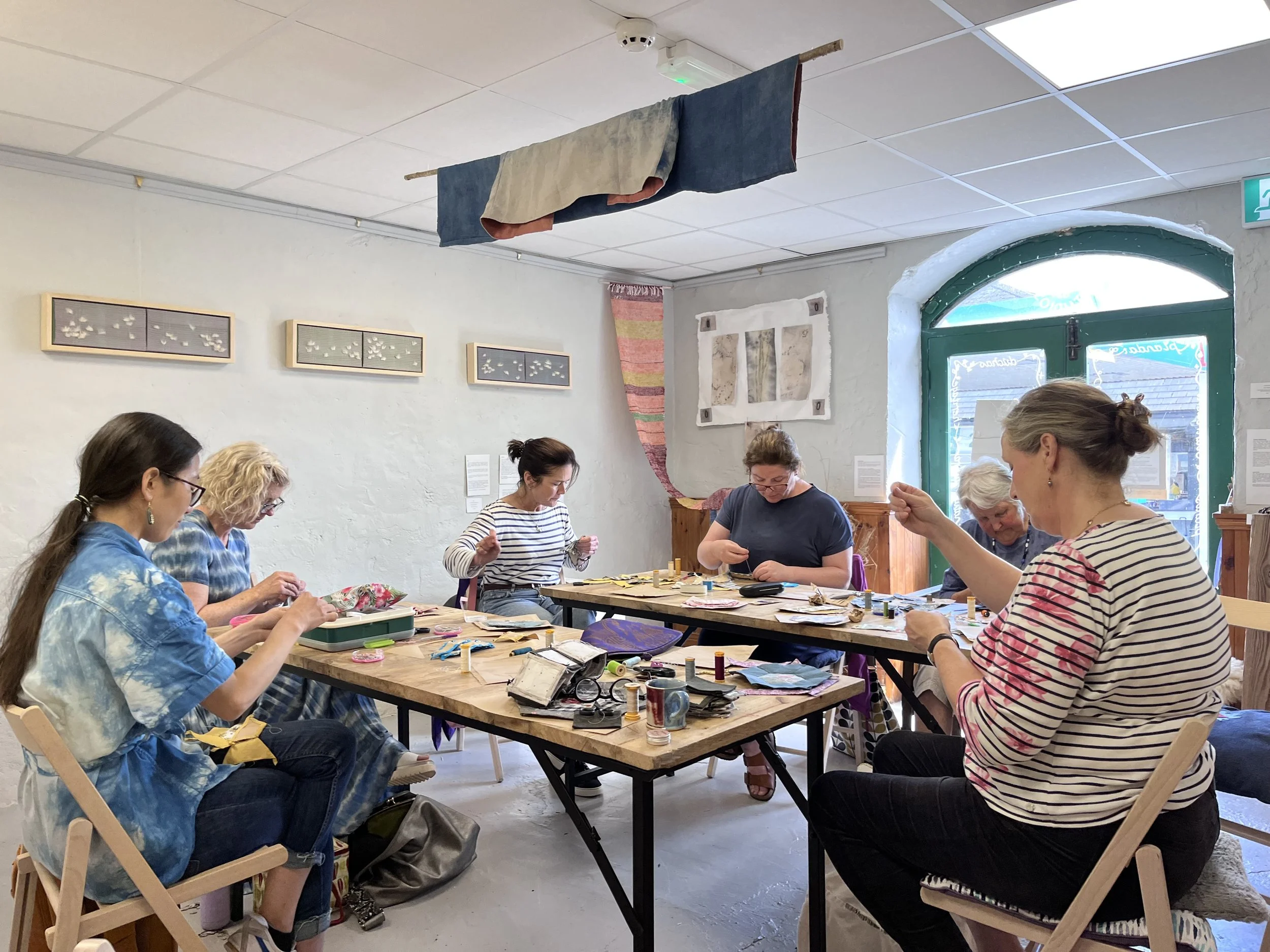Story of Our Kinsale Shirt
“Hark, now hear the sailors cry
smell the sea, and feel the sky
let your soul & spirit fly, into the mystic...”
Our Kinsale shirt is inspired by the tradition of the sailor suit, but how did the universally recognised sailors apparel, particularly the sailor collar, come about in the first place?
In the beginning, there was no official uniform for seamen, they would have worn their own clothes and being away at sea for so so long, they tended to let their hair grow. Sailors used grease or tar to hold their long hair in place so that it didn't get in the way as they worked. There wasn't much opportunity for bathing or laundering on a ship, so to protect their clothing from the tar, they wore a piece of cloth over their shoulders which became known as a 'tar flap'.
Eventually, the naval forces formalised the dress code and although sailors were no longer allowed long hair, the tradition of the tar flap was incorporated into the uniform with the sailor collar that we know today. Due to the perilousness of the sea, sailors were (and perhaps still are) a superstitious lot and it may have seemed prudent to retain the collar, in spite of it's original function having become obsolete. Even nowadays, it can be considered good luck to touch the collar of a sailor.
The archetypal dress of a sailor with the flap collar, neckerchief and bell bottom trousers has a singular look, conjuring lively sailors disembarking their ships after months journeying away at sea before returning to shore. There's a romance and mystery to the look of the classic sailor uniform, unlike anything a land-locked civilian might ordinarily wear, evoking the exotic and adventure, an irresistible combination.
source: Twisted Limbs and Crooked Branches
source: Authentic French Fashions of the Twenties
There's something inescapably appealing about uniforms in general and the sailor suit has long been referenced in the styling details of clothing for us non sea fairing folk, initially being popularised in the 1800s in women's fashion as well as young boys dress, hence the popularity of the sailor suit for page boys at weddings.
source: Chanel, Couture and Industry
Around 1913, the French designer, Gabrielle Chanel rebelled against the accentuated feminine shape that had long prevailed in women clothing, with it's restrictive corsetry. The fashion was for women to wear dresses which were boned to create a tiny waist, and an exaggerated bust and hips and inevitably this constrained movement as well as requiring someone to assist with all those fastenings and laces.
Chanel designed clothes with a relaxed cut, taking elements from mens clothing, including mens workwear which had a more utilitarian feel and was eminently more practical. She also utilised fabrics never before thought of as suitable for women clothing; knitted jersey in wool or silk was mostly used for sports and beach wear and in it's natural colour state, for mens undergarments. During the war, traditional fabrics were in short supply as they were used for uniforms, so it was easy step to persuade people of the necessity of turning to jersey clothing, which helped revolutionised the comfort and practicality of womenswear.
Gabrielle Chanel (above) in 1913 wearing her own clothing designs, of a heavy jersey sweater with sailor style collar and linen skirt. At the time, it would have been unusual for a woman's garment to be pulled over the head and years later, American Vogue commented "To many rich women, the charm of Chanel lay in the remarkable fact that they could dress themselves without anyone's help."
In more recent times, to mark her engagement at Buckingham Palace, Princess Diana wore a navy ensemble complete with a white sailor collar blouse and red ribbon bow. It is thought this was a nod to the traditional dress once worn by younger members of the royal family since the times of Queen Victoria and Czar Nicholas.
What we think of as a sailor suit is now mostly worn by junior servicemen and only on ceremonial occasions and has been replaced by a modern boiler suit style uniform for everyday wear. The traditional uniform with sailor collar designed to protect clothing from tar and the bell bottom trousers, practical for rolling up when scrubbing the ship's decks, has been updated to meet the requirements of modern day life in the Navy. However it lives on, providing inspiration in clothing design, to be reinterpreted and re-configured again and again.
source: Diana, Her Life in Fashion
Detail of the Kinsale shirt in pure cotton with carved mother-of-pearl buttons
Our Kinsale Shirt borrows the sailor collar from the traditional naval uniform as well as referencing the twenties, when women's clothing became more androgynous, adapting the fit to suit a contemporary femininity. This version with three quarter length sleeves is in a beautiful, fine cotton jacquard of elephant grey with brick red and ochre patterned stripes.















